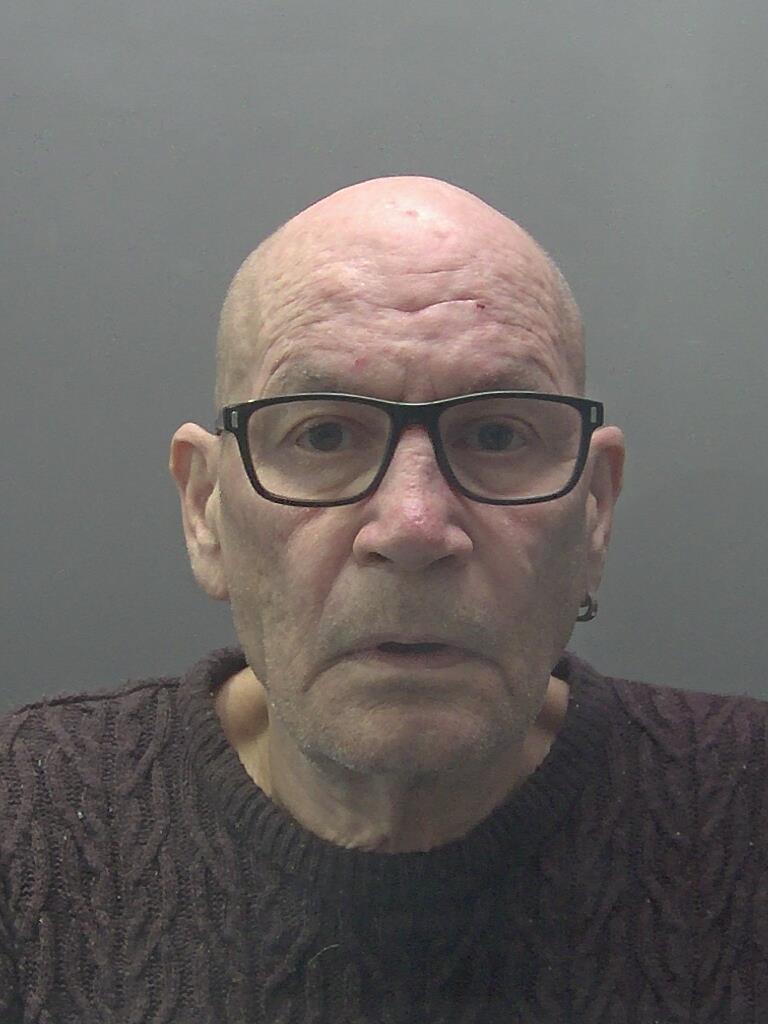
If not for a DNA breakthrough, the murder of Una Crown may never have been solved.
Ms Crown, a retired postmistress, was found dead in her bungalow in Wisbech, Cambridgeshire, on 13 January 2013.
Her throat was cut, she had been stabbed in the chest and her clothing had been set on fire. However, police did not initially treat her death as suspicious and did not preserve the scene for two days.
Prosecutor John Price described that as a “grave error of judgment by police officers who went to the house”.
It wasn’t until 10 years later, when the case was reviewed, that vital evidence was discovered – male DNA under fingernail clippings taken from Ms Crown’s right hand.
A new testing technique, not available at the time of her death, led to former kitchen installer David Newton, of Magazine Close in Wisbech, being charged with her murder.
The 70-year-old denied the offence, but was found guilty following a trial at the Cambridge Crown Court.
He appeared open-mouthed and glanced at the jury as the foreman returned their verdict of guilty, by a majority of 10 jurors to two.
This followed 29 hours and 13 minutes of deliberations.

Detective Superintendent Iain Moor of Cambridgeshire Police said afterwards that “mistakes were made during the initial investigation in 2013, for which we have apologised to Una’s family”.
Mr Moor, who became the senior investigating officer in the case, said it was looked at again “as part of our normal review processes in October 2022”.
“Vital evidence was retained from the 2013 crime scene, in the form of DNA under the fingernails of Una Crown’s right hand,” he said.
“It was through pioneering new techniques, testing for male DNA only, that gave the evidence breakthrough which has been so crucial.
“This DNA testing technique was not available in 2013.
“The DNA allowed us to cast doubt on David Newton’s claims that he hadn’t seen Una on the day, or days, before her death and place him at the scene of her murder.
“For more than a decade he thought he had gotten away with this most horrendous crime, but today’s result shows you cannot hide forever.”
Mr Moor said he hoped that the guilty verdict “gives Una’s family the closure they deserve and the answers they have longed for”, adding: “My thoughts are very much with them at this time.”
Ms Crown’s body was found in her hallway on 13 January 2013 by John Payne, the husband of her niece Judith Payne, who had driven to collect her to take her for Sunday lunch at their house.
Prosecutors said she had been killed the day before and that DNA evidence was the “nucleus of the case”.

Mr Price told jurors when opening the case that “male DNA, the profile of which matches that of David Newton”, was discovered by scientists in 2023.
He said this was “on nail clippings, which had been taken from the fingers and thumb of the unburnt right hand of Una Crown”.
He said the clippings had been taken at a post-mortem examination in 2013.
The barrister said the reason why Newton “went to her house on that night and as to why he then did to her what he did, these are not matters that the prosecution need prove”.
But he said the defendant was on state benefits in 2013 and they were his only source of regular income.
Mr Price said money was missing from Ms Crown’s handbag and Newton was “spending freely” on 13 January, playing a fruit machine on two visits to Wisbech Ex-Servicemen’s Club.
The prosecutor said there was evidence that Newton had been drunk on the night of 12 January and had been “pestering elderly women on the telephone”.
The judge, Mr Justice Neil Garnham, warned Newton: “The sentence for murder is life in prison but I have to determine the minimum period to be served.”
The sentencing is due to take place at the same court on 14 February.
Following conviction, Matthew Golby of the Crown Prosecution Service said: “For more than a decade, David Newton thought he could get away with murder. Today’s verdict proves otherwise.
“For reasons only known to himself, he inflicted truly horrendous injuries to Una Crown who should have been safe in her own home.
“Working closely with police, advancements in DNA technology provided us with the compelling forensic link which would finally ensure Newton face the full consequences of his actions.
“We were determined to achieve justice for Una, no matter how long it took, and our thoughts remain with her family and loved ones who we hope can find some comfort in today’s verdict.”







